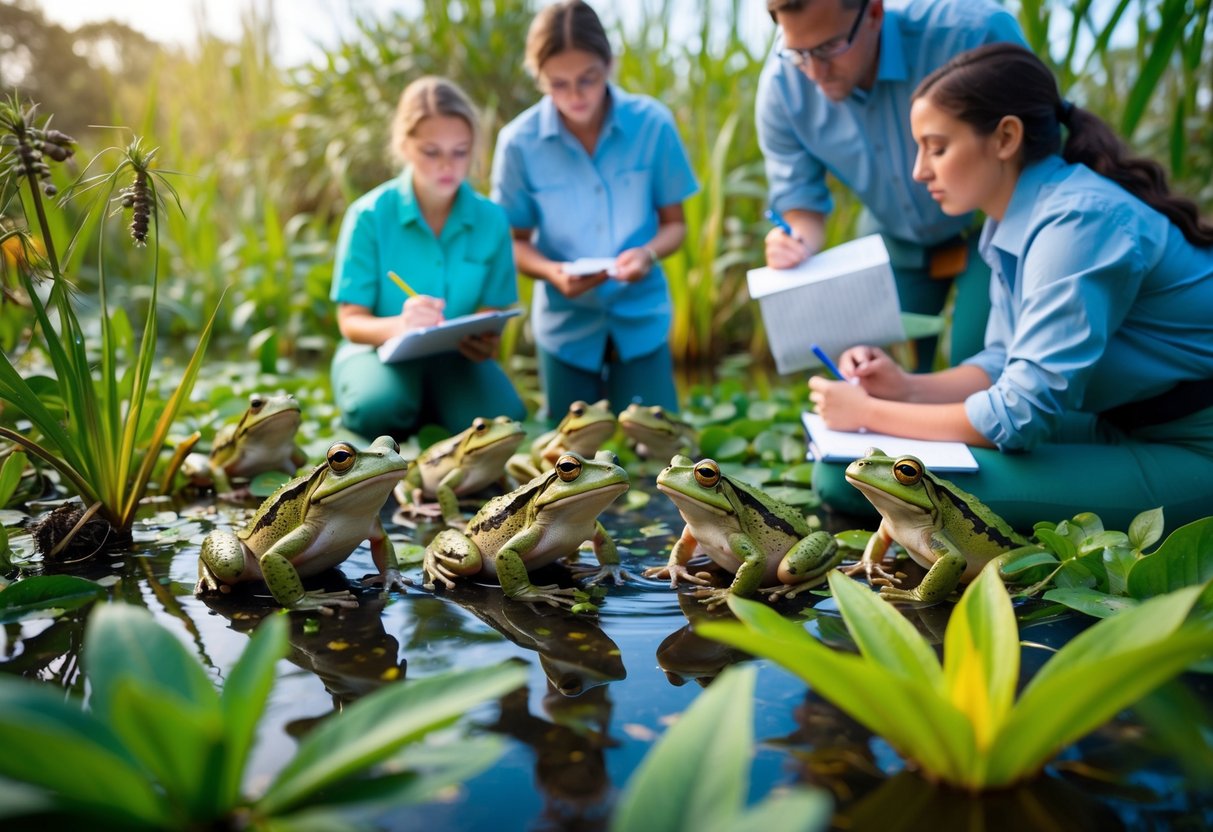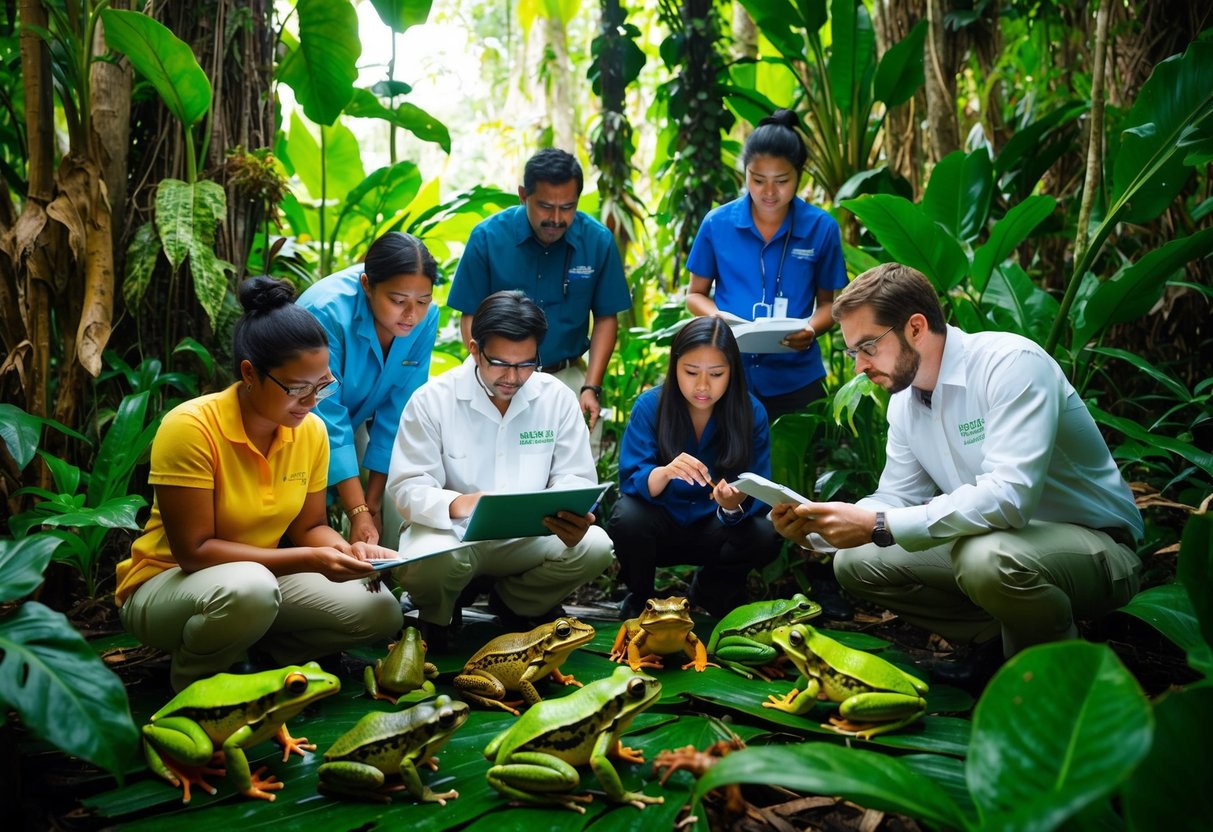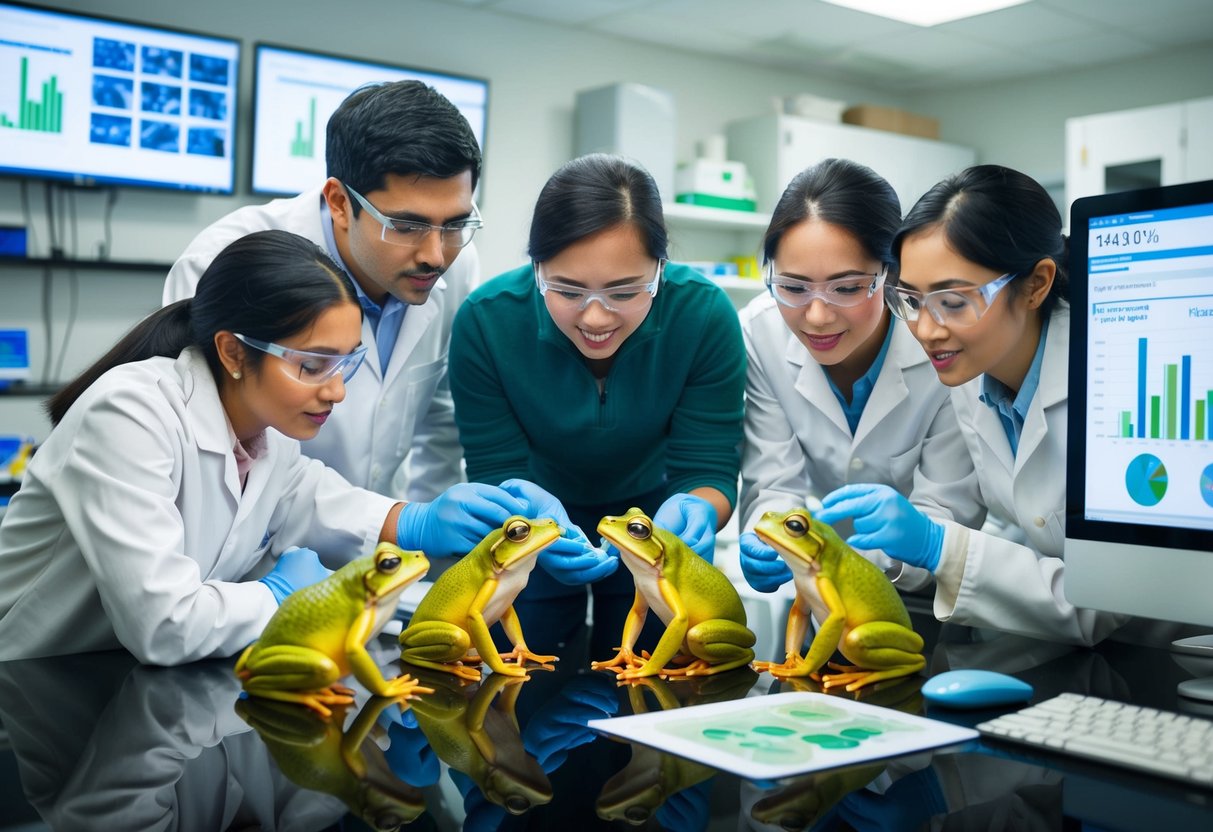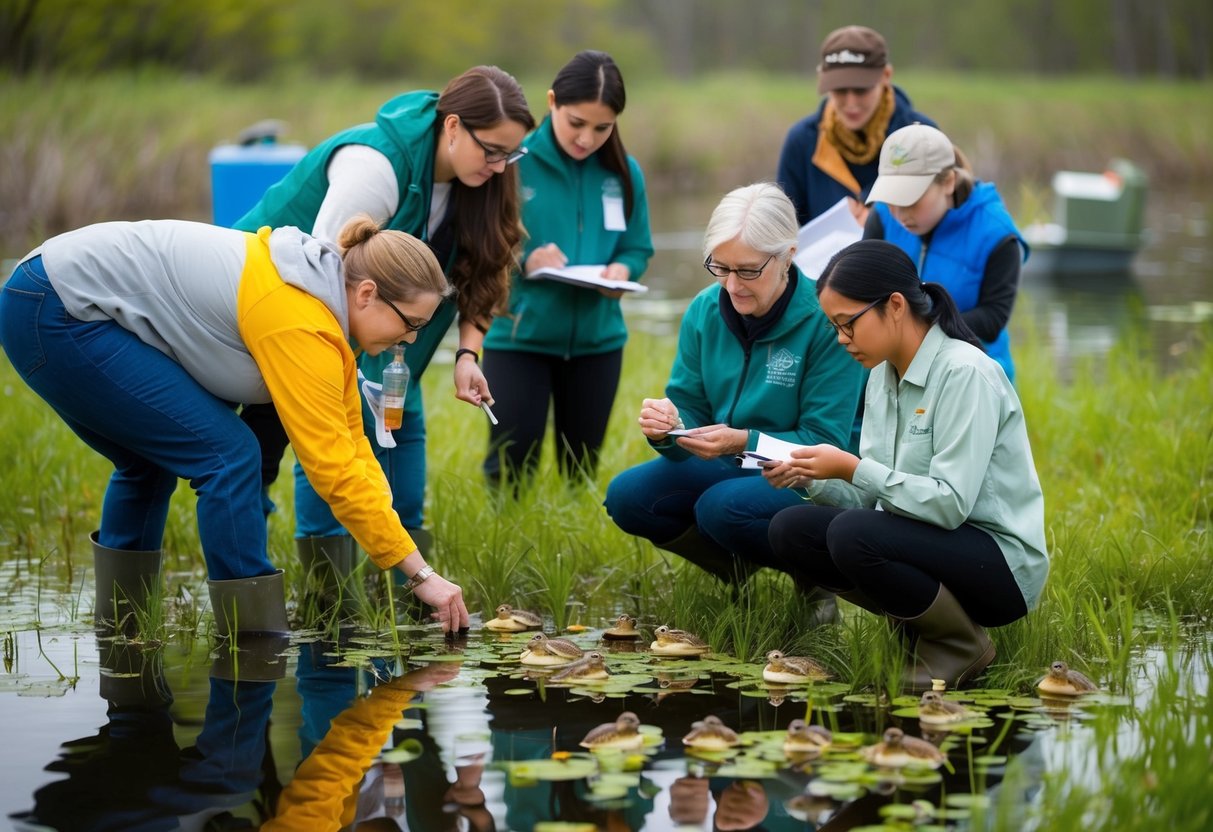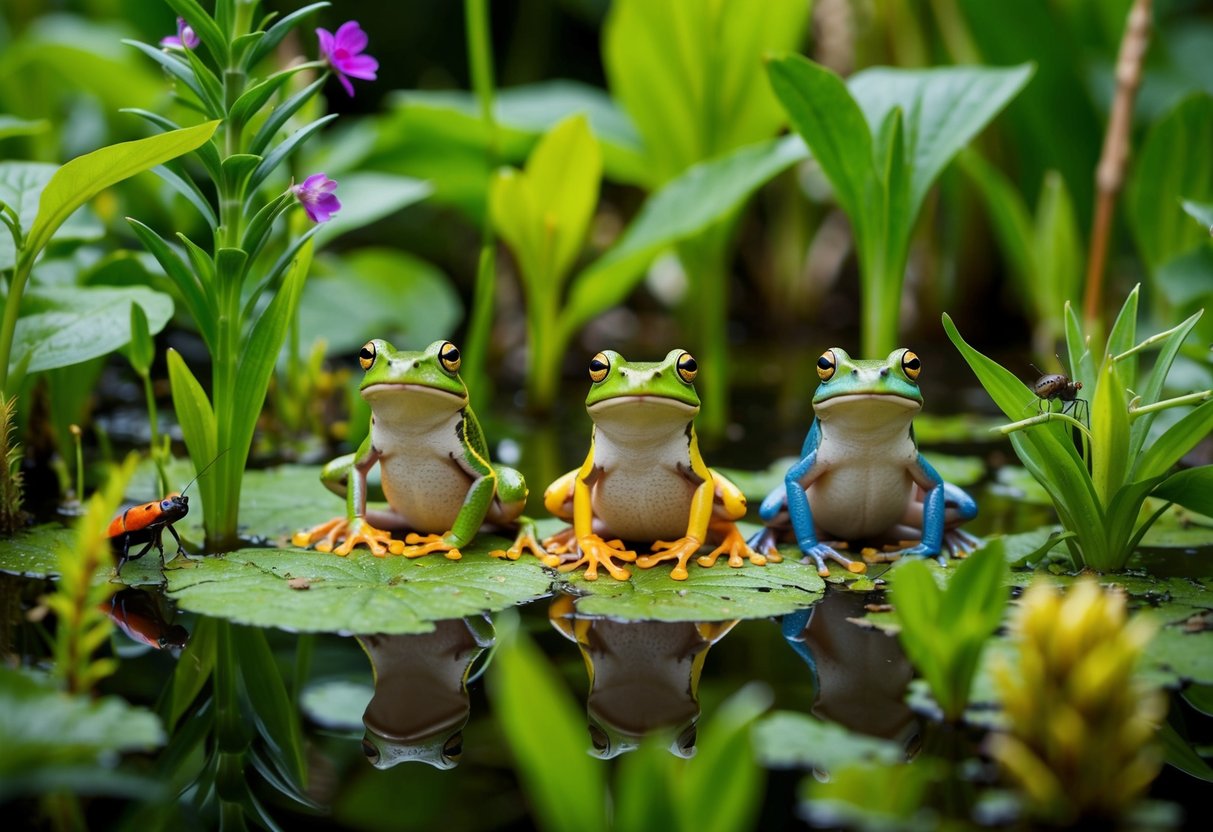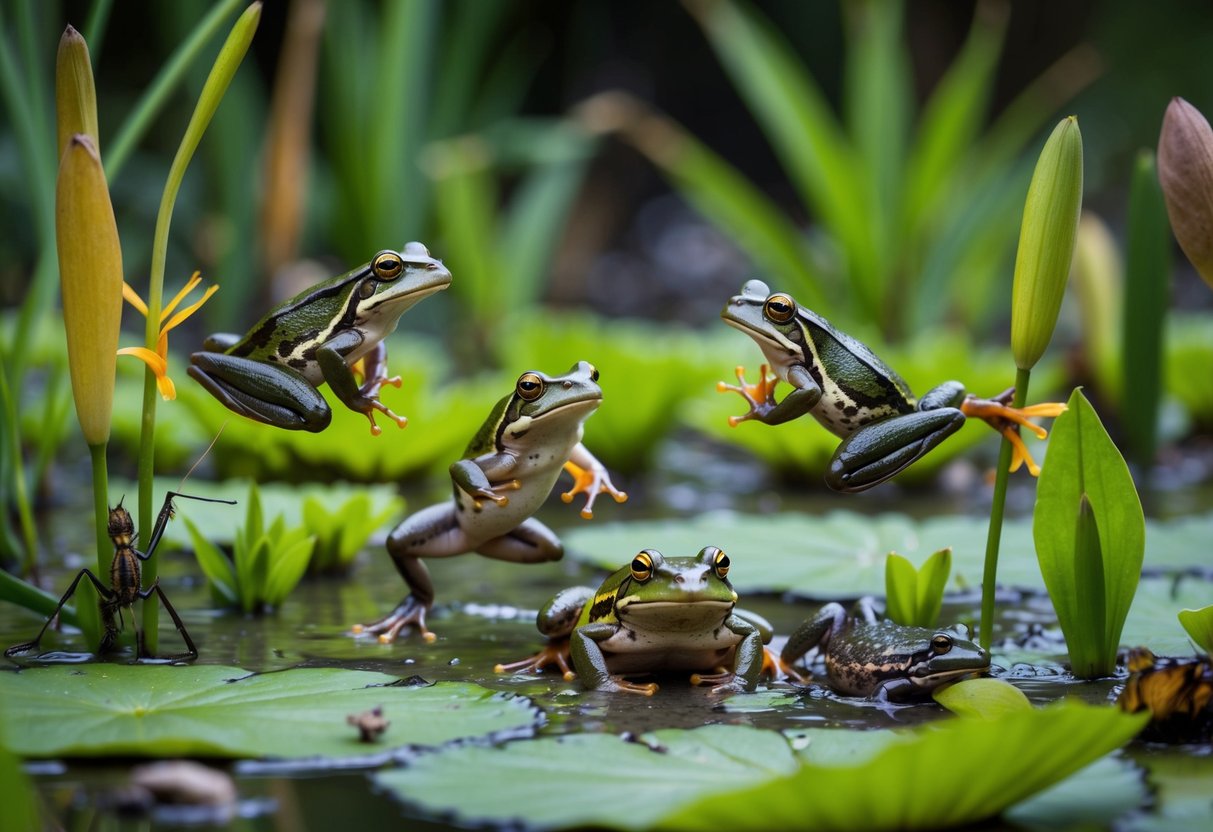How Frogs Contribute to Environmental Science: Indicators of Ecosystem Health
Frogs play a crucial role in environmental science. These small amphibians act as indicators of ecosystem health, alerting scientists to changes in the environment. Their sensitive skin absorbs substances from both water and land, making them excellent subjects for studying pollution and climate change impacts.
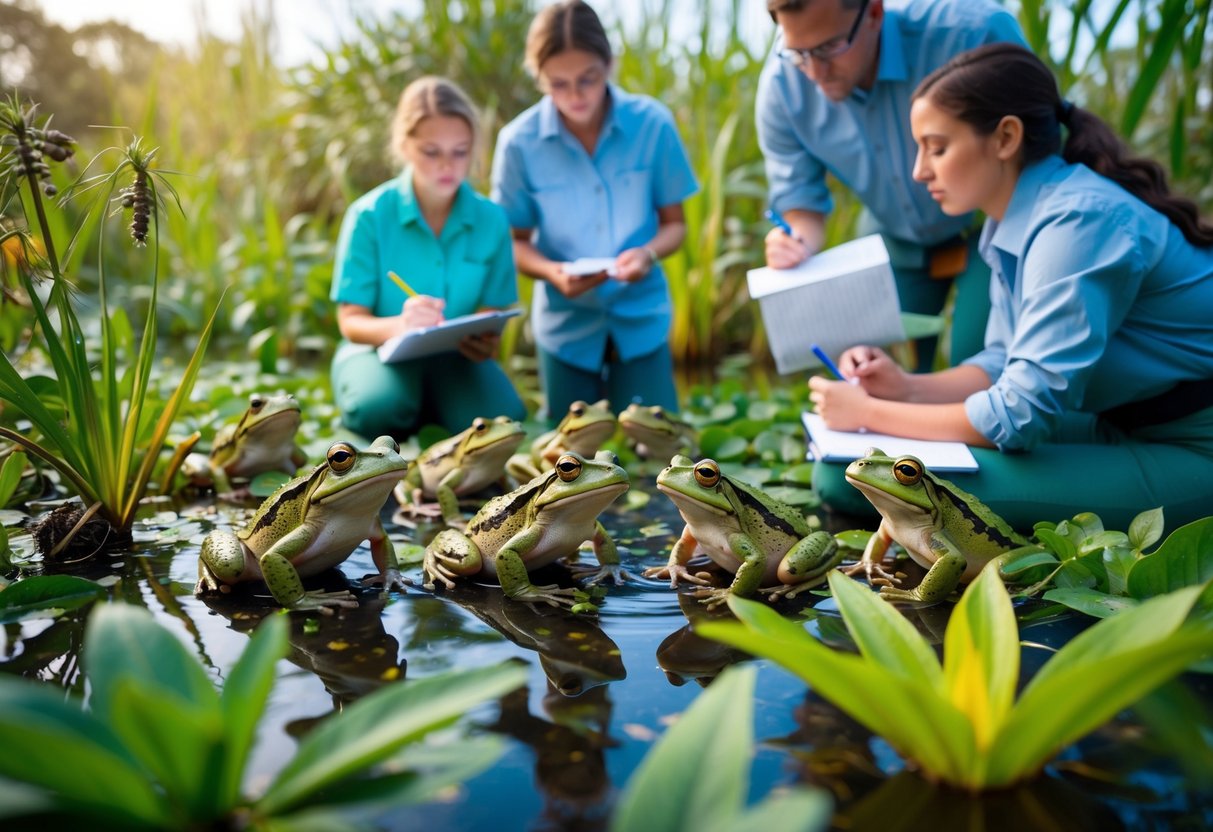
Frogs contribute to environmental science by helping control insect populations, supporting nutrient cycling, and maintaining plant diversity. Their importance in ecosystems extends beyond their own habitats, affecting agriculture and human health.
Scientists study frogs to gain insights into adaptation processes and how species respond to environmental changes.
Research on frogs has led to significant discoveries in biology and ecology. For example, studies on wood frogs have revealed important information about climate change adaptation. These findings help scientists understand how other species might cope with changing environments.
Key Takeaways
- Frogs serve as indicators of ecosystem health and environmental changes
- Research on frogs provides insights into adaptation and species responses to climate change
- Frog conservation efforts are crucial for maintaining biodiversity and ecosystem balance
The Role of Frogs in Ecosystems
Frogs play vital roles in their ecosystems. They act as both predators and prey, help maintain balance, and serve as indicators of environmental health.
Indicators of Environmental Health
Frogs are sensitive to environmental changes, making them excellent indicators of ecosystem health. Their permeable skin absorbs substances from water and air, including pollutants.
Changes in frog populations can signal problems in the environment. Scientists use frogs to monitor water quality, air pollution, and climate change impacts.
Frog deformities or declines may indicate the presence of harmful chemicals or other environmental stressors. This makes frogs valuable for early detection of ecosystem threats.
Biodiversity and Species Interactions
Frogs contribute to biodiversity and interact with many other species. As predators, they help control insect populations, including mosquitoes and crop pests.
Frogs also serve as prey for various animals like birds, snakes, and fish. This makes them a crucial link in food webs.
Some frogs have unique relationships with other species. For example, certain plants rely on frogs for pollination or seed dispersal.
Frog tadpoles play a role in aquatic ecosystems by eating algae and detritus, which helps maintain water quality.
Nutrient Cycling and Energy Flow
Frogs contribute to nutrient cycling and energy flow in ecosystems. As they move between aquatic and terrestrial habitats, frogs transfer nutrients and energy.
Their waste products add nutrients to soil and water. When frogs die, their bodies decompose, releasing nutrients back into the ecosystem.
Frog eggs and tadpoles are food sources for many aquatic animals, moving energy up the food chain. Adult frogs that feed on land and return to water also move nutrients between these habitats.
By consuming insects, frogs help regulate pest populations and indirectly affect plant growth and ecosystem productivity.
Frogs in Scientific Research
Frogs play a vital role in scientific studies across multiple fields. They help researchers learn about biology, find new medicines, and track climate change impacts.
Biological and Ecological Studies
Frogs and toads serve as important biological indicators in environmental research. Scientists use them to assess ecosystem health and water quality. Frog populations react quickly to changes in their habitat, making them useful for monitoring pollution and habitat destruction.
Researchers study frog life cycles and behaviors to understand broader ecological processes. This includes examining how frogs interact with other species in food webs. Frog mating calls and breeding patterns also provide insights into animal communication and reproduction.
Wood frogs have shown scientists how species adapt to different environments. Studies on these frogs reveal how populations change their growth rates and body sizes based on local conditions.
Pharmaceutical Discoveries from Frog Biochemistry
Frog skin secretions contain many unique compounds with potential medical uses. Scientists have found chemicals in frog skin that fight bacteria, viruses, and even cancer cells. Some of these compounds are being developed into new drugs.
Painkillers derived from frog toxins are stronger than morphine but less addictive. Researchers are working to turn these into safe medicines for humans. Frog secretions have also led to the creation of new antibiotics to fight drug-resistant bacteria.
The African clawed frog, Xenopus laevis, is widely used in labs. Its large, sturdy eggs make it ideal for studying embryo development and testing how chemicals affect growing organisms.
Climate Change Research through Amphibian Responses
Frogs are very sensitive to temperature and moisture changes. This makes them excellent indicators of climate change impacts. Scientists track frog breeding times and population sizes to measure environmental shifts.
Some frog species are moving to higher elevations as temperatures warm. Researchers use this information to predict how other animals might respond to climate change. Frog studies also show how warming temperatures affect the spread of diseases.
Recent research has found some frog populations recovering from fungal diseases worsened by climate change. This gives scientists hope and teaches them about species resilience in changing environments.
Conservation Efforts Involving Frogs
Frog conservation efforts focus on protecting these important amphibians and their habitats. Scientists and organizations work to save frog species through various methods and programs.
Habitat Preservation and Restoration
Frog habitats face many threats, including pollution, climate change, and human development. Conservationists work to protect and restore these vital areas.
One key strategy is creating protected areas. These zones limit human activity and preserve natural ecosystems. In some cases, this involves buying land to prevent development.
Restoration projects aim to improve damaged habitats. This can include:
- Cleaning up polluted water sources
- Planting native vegetation
- Removing invasive species
Conservationists also work with local communities. They teach about the importance of frogs and how to protect their habitats.
Captive Breeding Programs
When wild populations are in danger, captive breeding can help. These programs aim to increase frog numbers in controlled settings.
Zoos and research centers play a big role. They create ideal conditions for frogs to breed and raise young. This often involves:
- Mimicking natural habitats
- Providing proper nutrition
- Controlling temperature and humidity
Experts carefully select breeding pairs. This helps maintain genetic diversity. They also work to prevent disease spread in captive populations.
Some programs focus on rare or endangered species. The goal is to build up numbers for future reintroduction to the wild.
Reintroduction Projects
Reintroduction projects aim to release captive-bred frogs into suitable habitats. This helps boost wild populations and restore ecosystem balance.
Before release, scientists carefully choose and prepare sites. They consider factors like:
- Food availability
- Predator presence
- Water quality
- Disease risks
Frogs are often released in stages. This allows them to adjust to the new environment. Researchers monitor the released frogs to track their survival and breeding success.
These projects can face challenges. Reintroduced frogs may struggle to adapt or face unexpected threats. Despite this, many projects have helped save species from extinction.
Educational Importance of Frogs
Frogs play a key role in teaching students about ecology and biology. They help kids learn about life cycles, habitats, and environmental health through hands-on experiences.
Frogs in Field Studies
Field studies with frogs give students real-world science skills. Kids can observe frog behavior in local ponds and streams. They learn to identify different species by sight and sound.
Students practice data collection by counting frogs or measuring water quality. This teaches the scientific method and ecology basics.
Frog studies also show how ecosystems work. Kids see how frogs interact with plants, insects, and other animals. They learn about food webs and energy flow in nature.
Field work with frogs builds environmental awareness too. Students see firsthand how pollution or habitat loss affects frog populations.
Frogs in Classroom Settings
Frogs make great classroom pets for biology lessons. Students can watch tadpoles grow into adult frogs over weeks or months. This gives a clear view of metamorphosis and life cycles.
Frog anatomy lessons teach vertebrate body systems. Kids can compare frog organs to human ones. Dissections may be done with older students to learn more.
Simple experiments with frogs teach about animal behavior and senses. Students can test how frogs respond to light, sound, or touch.
Frogs also help teach genetics and heredity. Students can breed frogs to see trait inheritance in action.
Challenges in Frog Research and Conservation
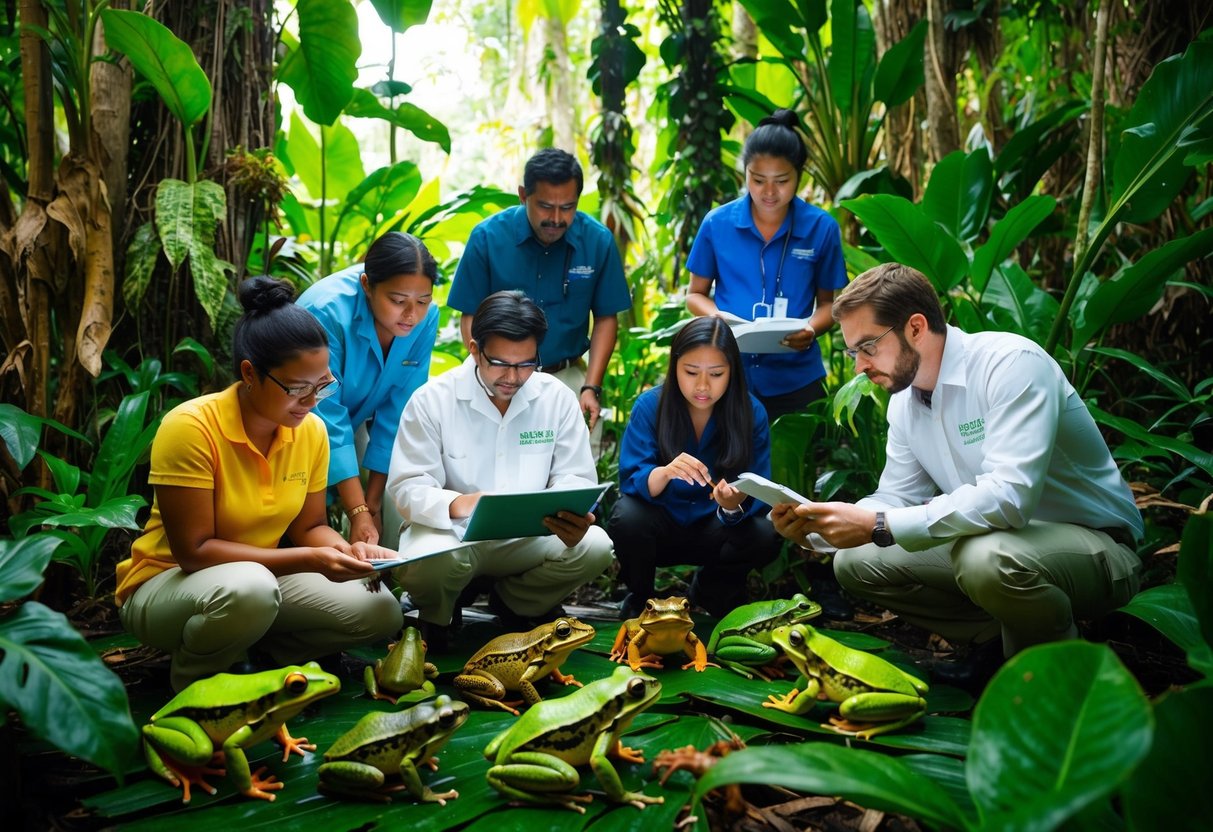
Frogs face many threats in the modern world. These challenges make it hard to study and protect frog species. Researchers work to find ways to help frogs survive and thrive.
Pollution and Pesticides
Frogs have thin, permeable skin that easily absorbs chemicals from their environment. This makes them very sensitive to pollution. Pesticides used in farming can harm frogs even at low levels. These chemicals can cause deformities and reduce frog numbers.
Water pollution is also a big problem. Frogs lay their eggs in water, so polluted ponds and streams affect their breeding. Acid rain and toxic runoff can kill frog eggs and tadpoles.
Researchers are looking at safer pest control methods to help frogs. They also study ways to clean up polluted water bodies where frogs live.
Invasive Species and Predation
Non-native animals brought to new areas can harm local frog populations. These invasive species often eat frogs or compete with them for food.
For example:
- Bullfrogs in the western U.S. eat smaller native frogs
- Fish stocked in mountain lakes prey on frog eggs and tadpoles
- Cane toads in Australia poison native animals that try to eat them
Frog habitats are also at risk from invasive plants. These plants can change the local ecosystem, making it harder for frogs to survive.
Scientists work to remove invasive species and protect native frog habitats. This helps keep local food webs in balance.
Diseases Affecting Frog Populations
Frogs around the world face serious threats from diseases. The most well-known is chytrid fungus, which has caused many frog deaths and extinctions.
Other diseases also hurt frog populations:
- Ranavirus can kill large numbers of frogs quickly
- Severe perkinsea infections affect tadpoles in North America
Climate change makes some of these diseases spread faster. Warmer temperatures let them reach new areas where frogs have no defense against them.
Researchers are testing ways to treat sick frogs and stop diseases from spreading. They also work to breed frogs that can resist these illnesses.
Technological Advances in Herpetology
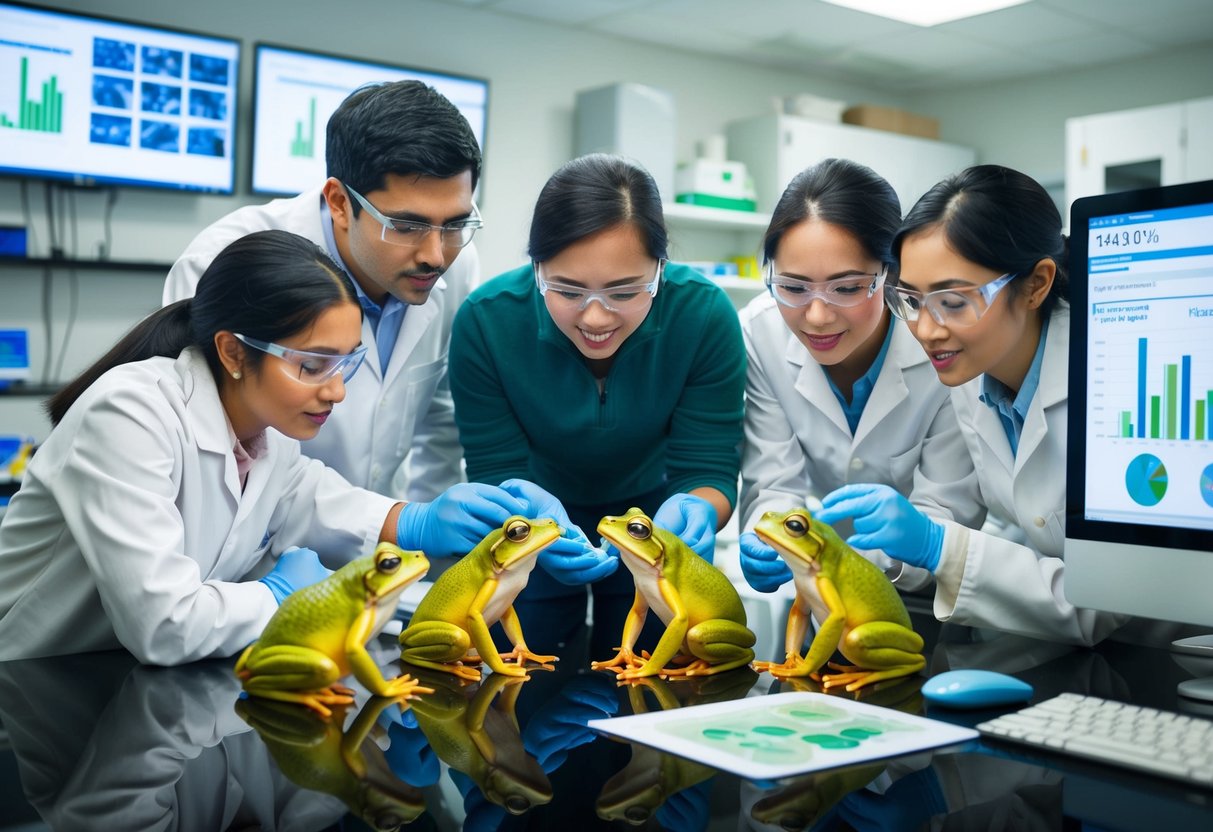
New tools and methods have transformed how scientists study frogs and their habitats. These innovations allow researchers to track frog movements and analyze their genetic makeup in detail.
Telemetry and GIS in Habitat Mapping
Tracking devices and mapping software help scientists follow frog movements. Tiny radio transmitters can be attached to frogs, sending signals that show where they go.
GPS collars work for larger frog species. They provide precise location data over time. This information reveals frog travel patterns and habitat use.
Geographic Information Systems (GIS) combine this tracking data with maps. GIS creates detailed habitat models showing where frogs live and move. These maps help identify important areas to protect.
Drones now survey frog habitats from above. They capture high-resolution images of ponds, streams, and forests. This aerial view helps spot changes in frog environments over time.
Genetic Analysis Techniques
DNA sequencing has become faster and cheaper. Scientists can now study frog genes in great detail. This reveals how different frog populations are related.
Genetic analysis shows how frogs adapt to their environments. It helps identify which genes let frogs survive in various climates. This knowledge is crucial as habitats change due to global warming.
Environmental DNA (eDNA) testing detects frog presence from water samples. It finds tiny bits of frog DNA left behind in ponds or streams. This method can find rare frogs without seeing them directly.
Gene editing tools like CRISPR allow precise changes to frog DNA. This helps scientists understand how specific genes affect frog traits and survival.
Community Science and Citizen Involvement
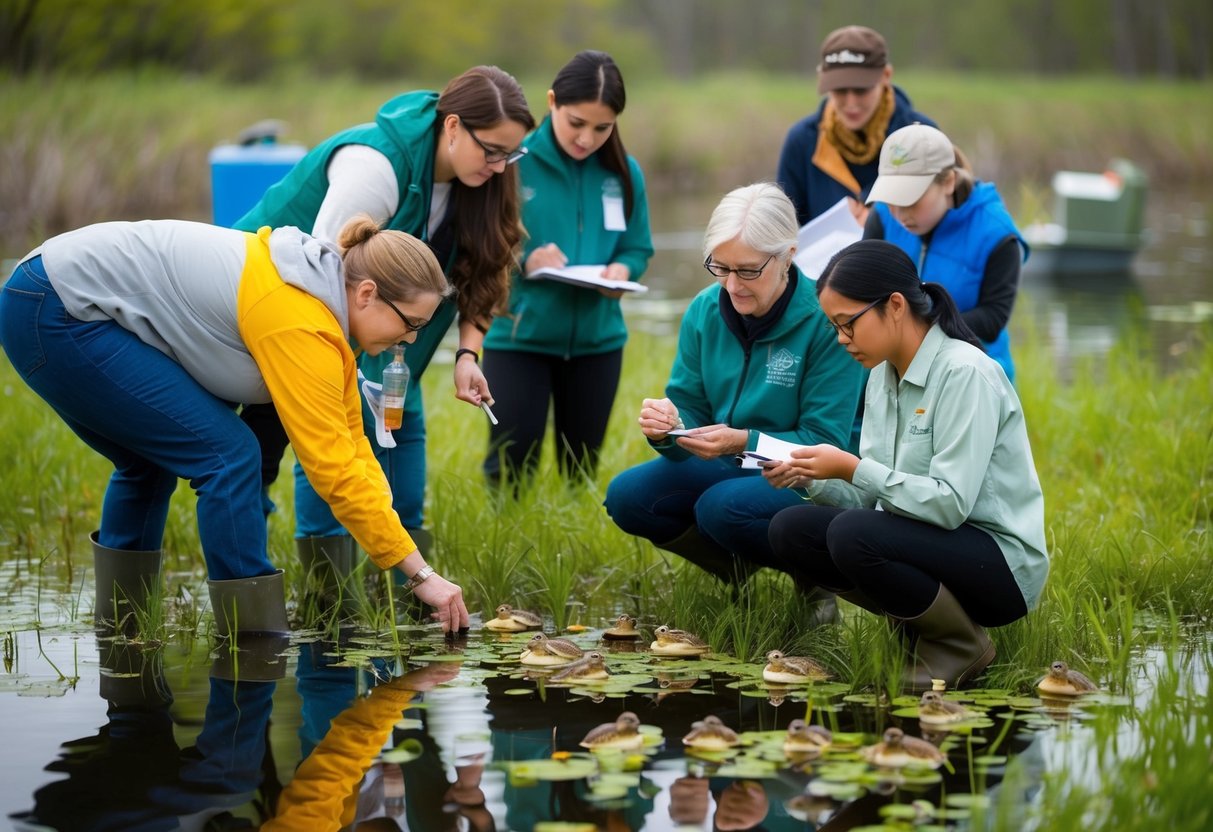
People play a big role in frog research. Regular folks help scientists study frogs in their areas. This gives experts more data to work with.
Frog Monitoring Programs
Citizen naturalists take part in frog monitoring programs. They go outside and listen for frog calls at night. They record what they hear and when.
This info helps track frog numbers over time. It shows where different frog species live. Scientists use this data to spot changes in frog populations.
FrogWatch USA is a popular program. It trains volunteers to identify frogs by their calls. People submit their findings online. This creates a big database of frog activity across the country.
Public Education Campaigns
Education helps more people learn about frogs. Schools and nature centers teach kids about local frogs. They explain why frogs are important to the environment.
Some groups hold “frog nights” where people can see and hear frogs up close. This gets folks excited about helping frogs.
Websites and apps make it easy to share frog info. People can look up frog species in their area. They learn how to make frog-friendly spaces in their yards.
These efforts create more frog fans. More people then want to join research projects. This leads to even more data for scientists to use.
Future Outlook for Frogs in Environmental Science
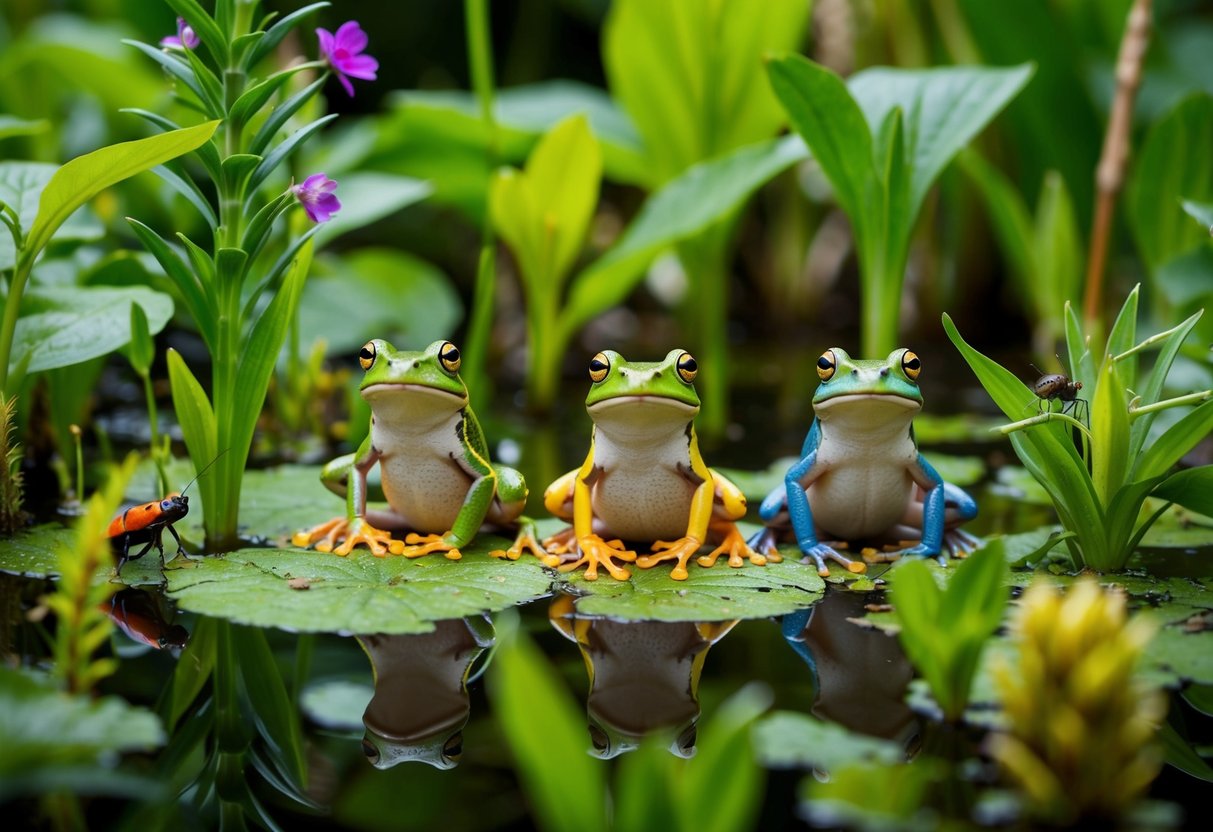
Frogs will play a crucial role in future environmental research and policy. Their unique traits make them valuable indicators of ecosystem health and climate change impacts.
Emerging Research Areas
Frog populations can adapt quickly to environmental threats. This ability makes them ideal subjects for studying rapid evolution in response to climate change.
Scientists are exploring how frog genetics relate to climate adaptations. This research could help predict how species might cope with future environmental shifts.
Emerging technologies like environmental DNA (eDNA) sampling may improve frog monitoring. These tools could track rare species and detect early signs of population changes.
Policy Implications and Legal Protections
Frog research findings will likely shape future conservation policies. As key indicators of ecosystem health, frogs may influence habitat protection laws.
Governments might increase funding for frog-focused climate research. This could lead to more accurate climate models and better-informed environmental policies.
International agreements may emerge to protect frog habitats across borders. Such policies could help preserve biodiversity and maintain ecosystem balance.
Local regulations might focus on reducing threats to frog populations. This could include stricter controls on pesticide use and wetland development.
Frequently Asked Questions
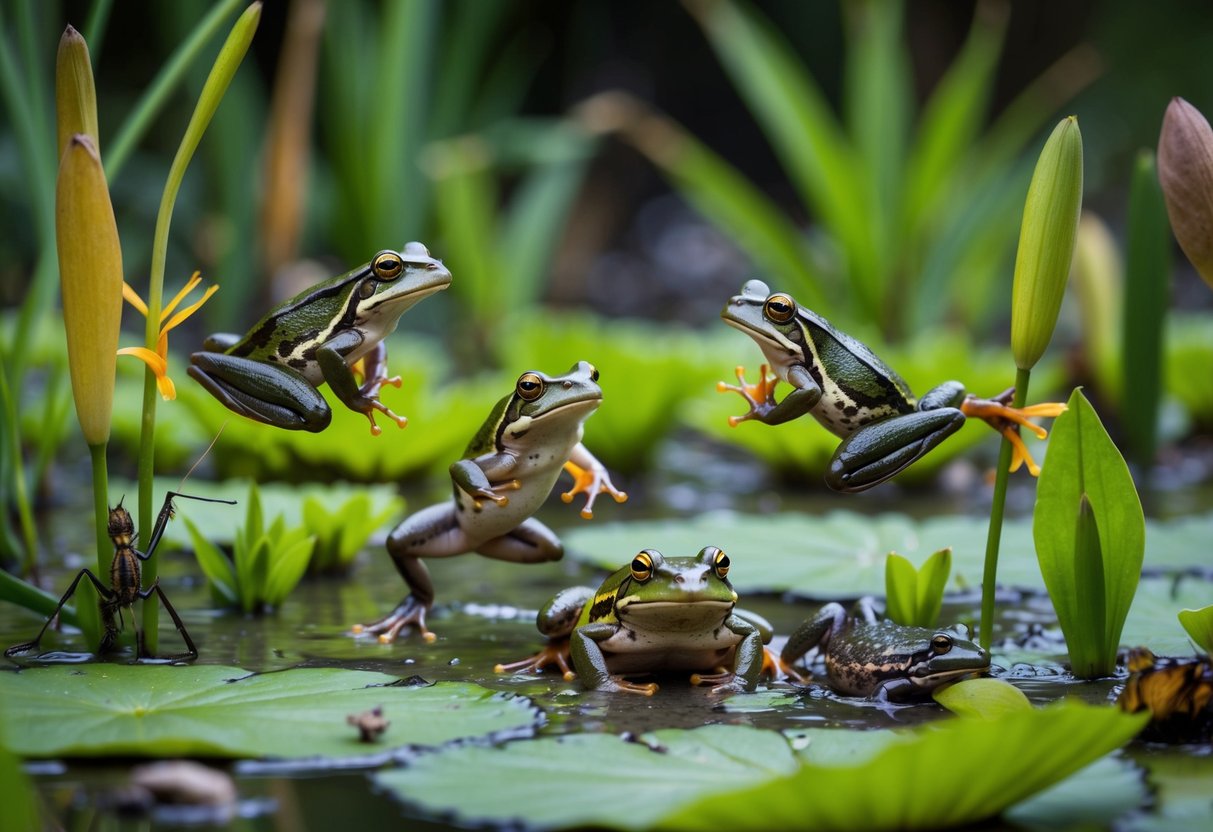
Frogs play crucial roles in ecosystems and environmental science. They impact food chains, benefit human health, and serve as key indicators of environmental quality. Scientists use various methods to study these amphibians and their habitats.
What role do frogs play in maintaining ecosystem balance?
Frogs are both predators and prey in many ecosystems. They eat insects, helping to control pest populations. Frogs also serve as food for birds, mammals, and reptiles.
Their presence or absence can affect the entire food web of an ecosystem. This makes frogs important for maintaining a healthy balance in nature.
In what ways are frogs critical to human health and agriculture?
Frogs help control insect populations, including mosquitoes that can spread diseases. This natural pest control benefits human health by reducing disease vectors.
In agriculture, frogs eat crop-damaging insects. This can lead to less need for chemical pesticides, promoting more sustainable farming practices.
How do amphibians like frogs serve as indicators of environmental health?
Frogs are sensitive to environmental changes in both water and land habitats. Their permeable skin absorbs substances from their surroundings.
Changes in frog populations or health can signal pollution, habitat loss, or climate change. Scientists use this information to assess overall ecosystem health.
What scientific methods do researchers employ to study frogs in their natural habitats?
Researchers use various techniques to study frogs. These include population surveys, habitat assessments, and water quality tests.
Some scientists use unique methods to understand frog exposure to pesticides. This can involve analyzing frog tissues for chemical accumulation.
Why are frogs considered a vital component in the study of environmental science?
Frogs live in both aquatic and terrestrial environments. This dual habitat use makes them valuable for studying multiple ecosystems.
Their sensitivity to environmental changes allows scientists to detect issues early. Frog studies can reveal problems in water quality, air pollution, and habitat degradation.
How does the presence of frogs benefit other species within their ecosystem?
Frogs serve as a food source for many animals. Birds, snakes, and fish often rely on frogs as part of their diet.
Tadpoles help keep algae growth in check in aquatic habitats. This maintains water quality for other species living in ponds and streams.

